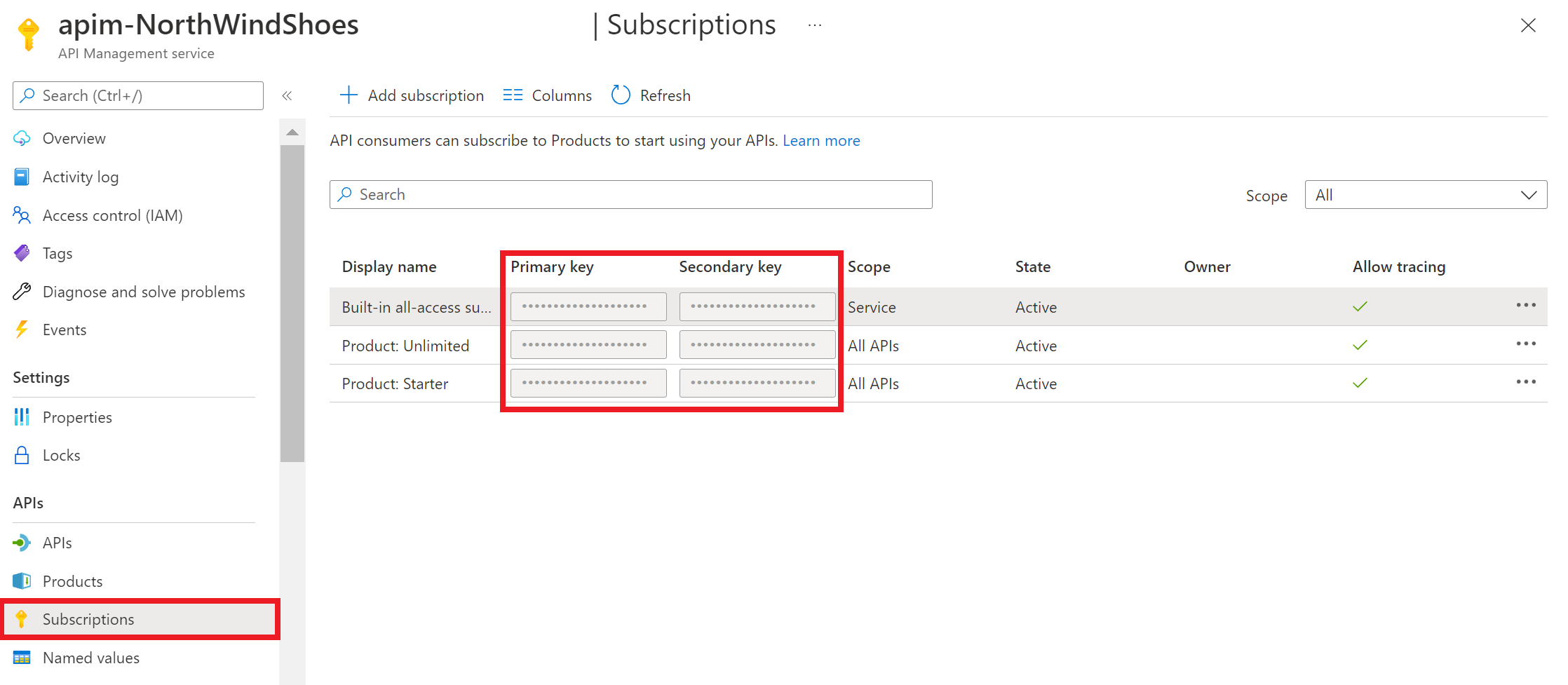Call an API with a subscription key
When you publish an API, you often want some level of control over who can access the API through the gateway. Subscription keys are one way to restrict access to an API.
Here, you learn how to use subscription keys to secure your APIs.
Subscriptions and keys
To protect your APIs, you can use a subscription key.
Note
In production API Management environments, you typically combine a subscription key with other mechanisms to protect your APIs from unauthorized use, such as certificate authentication or OAuth 2.0 authorization. These are outside the scope of this module.
A subscription key is a unique autogenerated string, which is passed through in the headers of the client request, or as a query string in the URL. The key is directly related to a subscription, which can be scoped to different areas, giving granular control over permissions and policies. The main subscription scopes are:
- All APIs
- A single API
- A product
An application that calls a protected API must include the key in the request.
You can regenerate these subscription keys at any time. For example, regenerate subscription keys if you suspect that a key was shared with unauthorized users.

Every subscription has two keys, a primary and a secondary. Having two keys makes it easier when you need to regenerate a key. For example, if you want to change the primary key and avoid downtime, use the secondary key in your apps.
For products where subscriptions are enabled, you must supply a key when making calls to APIs in that product. As a developer, you can obtain a key by submitting a subscription request. This process is a core part of the API Management workflow.
Note
Creating new users and giving them their subscription keys so they can access the API is a core part of the API Management workflow, but is outside the scope of this module.
Call an API with the subscription key
Applications must include a valid key in all HTTP requests when they make calls to API endpoints that are protected by a subscription. Keys can be passed in the request header, or as a query string in the URL.
The default header name is Ocp-Apim-Subscription-Key, and the default query string is subscription-key.
To test out your API calls, you can use the developer portal (if it's available in your service tier), a command-line tool such as curl, or other REST client tools.
Here's an example of a GET request that passes a key in the request header using the curl command:
curl --header "Ocp-Apim-Subscription-Key: <key string>" https://<apim gateway>.azure-api.net/api/path
Here's an example curl command that passes a key in the URL as a query string:
curl https://<apim gateway>.azure-api.net/api/path?subscription-key=<key string>
If the key isn't passed in the header, or as a query string in the URL, you get a 401 Access Denied response from the API gateway.